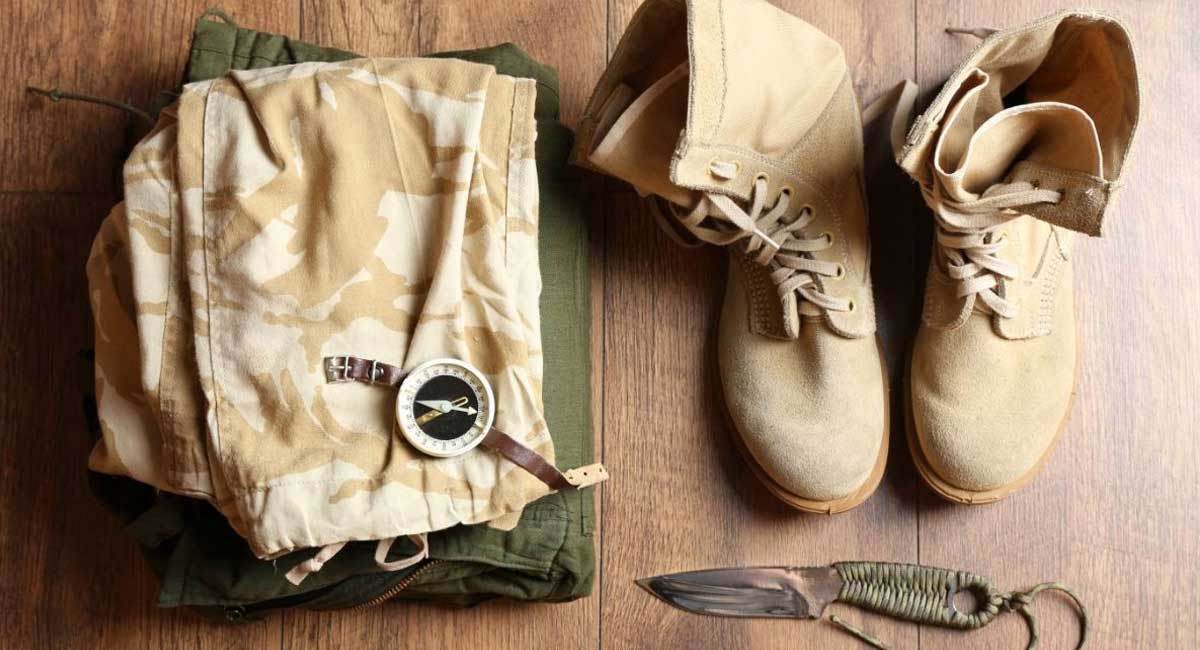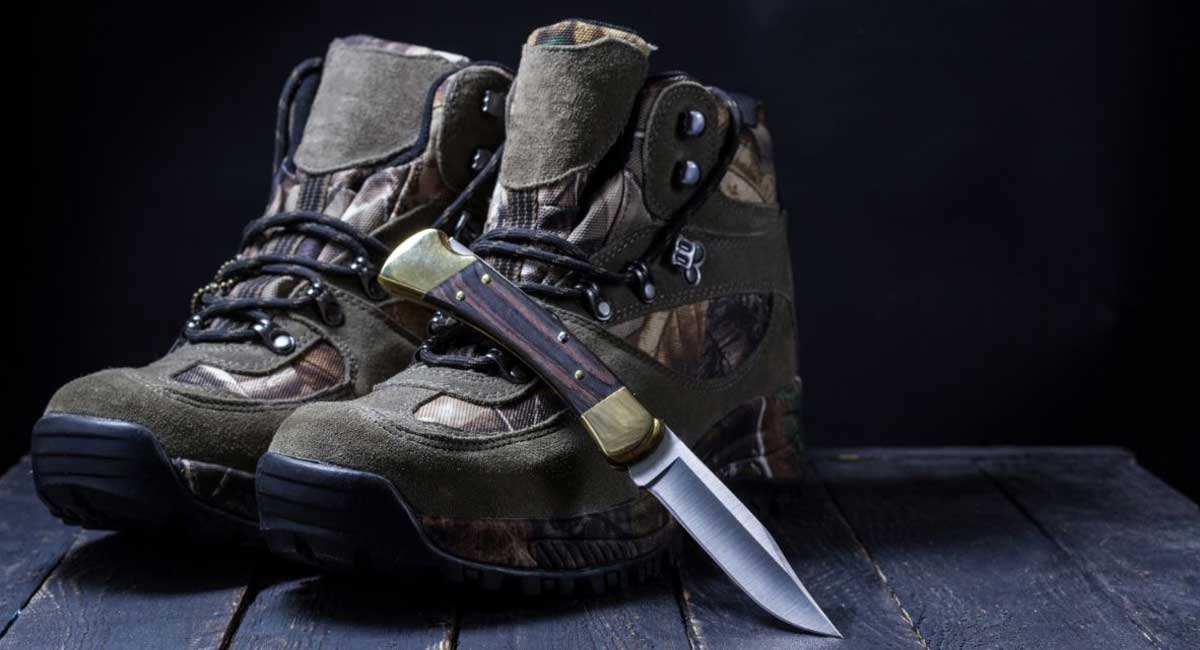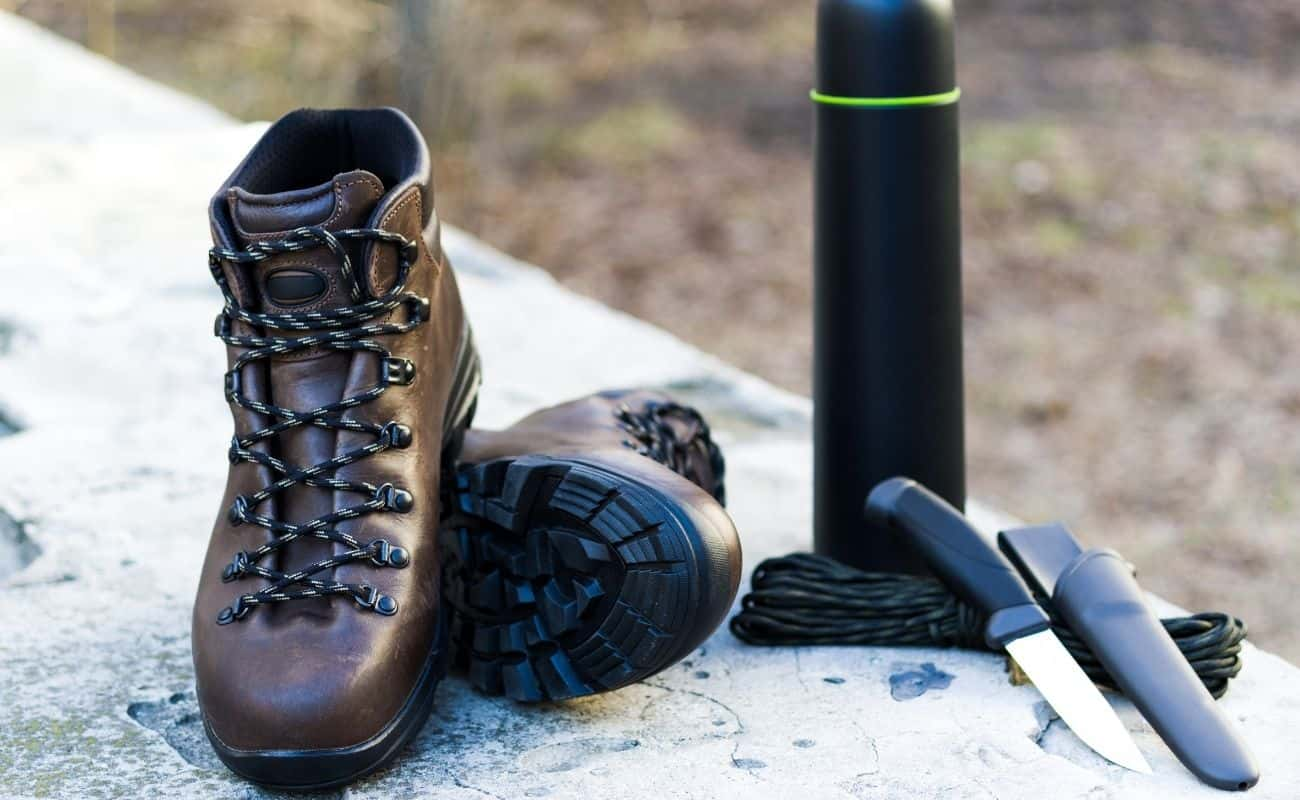Signup for our monthly newsletter and get your FREE "Tactical Gear" Guide
How to Wear a Boot Knife Safely and Discreetly
- Home
- Tactical Boots Advice
- How to Wear a Boot Knife

This site contains affiliate links to products. We may receive a commission for purchases made through these links.
The pen might be mightier than the sword, but a good knife will make your tactical outfit look sharper than a pen ever could. A knife is also a life-saving tool to have with you if you happen to find yourself in a life-threatening situation. These blades come in handy when you are doing field work as well.
A lot of people prefer to wear their knives on the ankle or inside the boot because it’s so easy to conceal a survival knife there. Boot knives also tend to be more comfortable for everyday carry than a belt knife that keeps poking you in the side.
Improper knife positioning or wearing can, however, be very dangerous because you can easily cut yourself to shreds if you misstep. In this guide, we will show you how to wear a boot knife safely and discreetly.
How Is a Boot Knife Different from Other Knives?

Any knife can technically be worn around the ankle area or inside your boot. A true boot knife is designed for self-defense or survival purposes. High-quality boot knives usually have the following characteristics:
A Fixed Handle
This type of knife often has a fixed blade design rather than a folding design. Knives with a fixed design tend to be thinner and are a lot more comfortable to wear compared to a folding knife with a thick handle.
Fixed designs are also preferable to folding ones because it’s harder to get your weapon out around the ankle area. If you have a folding knife. you won’t just have to struggle to draw the knife, but you will also have to take the time to open it.
Needle-point Blade
Boot knives usually have a needle point blade or typical dagger style blade. This needle-point blade, or spear point blade, tends to be more fragile than other blade designs due to its thinner design, but it can create a more comfortable fit against your skin.
The symmetrical blades with their dual edges are sharp from handle to point to enhance the knife’s ability to pierce and penetrate. They can be used for cutting, but are more specifically designed for fighting or stabbing in self-defense.
Short or Small Design
Boot knives also tend to be shorter or smaller for two reasons.
One: As with handguns, it can be harder to draw a boot knife when you have to bend down and lift your pant leg to get it out. A bigger knife will be even harder to extract. Two: A bigger knife will restrict your movement because it might affect your ankle bend.
An average blade length of 2.5 – 5 inches, and an overall length of 5 – 9 inches, is recommended for tactical purposes because the knife will be easy to extract and comfortable to wear.
Try not to choose a knife that is much shorter than 5 inches in overall length. If it’s too small, the blade won’t offer much protection because it won’t be able to penetrate deep enough to serve its purpose of protecting you.
A knife that is short might not sit very well inside low-rise ankle boots either. Smaller knives are also a bit challenging to handle because the handle might not offer enough space for a firm grip.
These knife characteristics are recommended for boot knives, but nothing is written in stone. With the right holster or sheath, you can look into carrying other types of backup knives or knives with different types of blades. You can even wear a hunting knife, swiss army knife, or multi tool knife in your boot if you want to have a backup tool with you that can be used for a wide range of applications.
How to Wear a Boot Knife
All knives are dangerous, but boot knives have a self-injury risk because these knives are sharp on both sides of the blade and have a fixed handle. It is pretty easy to get a cut if you’re not careful. A proper carrying position is very important, or you could risk slicing your ankle or boot while performing activities such as jumping, running, or hiking.
If you carry a boot knife, it should either be stored inside a hard sheath, or you should get a pair of tactical boots that already have a boot knife pocket design.
Ultimately, there are seven main ways to carry a knife in your boot. Each of these carrying methods have some advantages and disadvantages. Here is a quick look at the pros and cons of these different carrying methods.
1. Inside the Boot
The sharp knife is placed inside a sheath, and then placed inside the boot with the tip facing downward. This carrying method is only suitable for ankle boot designs because you need to pull the laces tightly to hold the knife in place.
The knife can be carried on the inside or outside of the midfoot. Carrying a knife on the outside of your midfoot allows for easier access to your weapon, and it tends to be more comfortable, because a knife on the inside of your foot might cause you to trip if your other foot gets caught on the handle.
This carrying method is not a favorite because carrying a boot knife inside your shoe is not very comfortable. You need to pull the laces very tight to keep the knife in place, which can cause discomfort. If your laces are too loose, your shoe won’t fit as well, and the knife could fall out while you climb or run.
On the other hand, this is an ideal position for quick knife access. The knife is easier to extract because your pant leg doesn’t restrict you as much.
For this carrying position, you need to invest in a proper hard shell sheath that will protect your foot from the blade. A boot knife sheath that is made with nylon won’t offer you the needed protection because the knife will cut through the materials and damage your boot or foot.
2. In a Boot Pocket
Some tactical boots are designed with integrated pockets. These are the safest and most comfortable because the knife isn’t pressed directly against your skin. The boot pocket will keep your knife secure. Your knife is also very easy to access because the boot pocket allows for easy extraction.
The downside to modern boots with a built-in knife pocket is that you will be restricted to a specific pocket knife design and size. Not all double edge blades will fit into that specific boot pocket. It can also be pretty tricky to find a good quality pair of tactical boots that have a built-in pocket. Military boots with this unique feature can be very expensive.
3. On a Boot With Built-in Straps
Some tactical boots are designed with built-in straps that you can use to secure different objects, like a knife, flashlight, or other useful tactical gear.
The straps are external and allow you to tie a boot knife sheath to the outside of your boot. This type of boot is more flexible compared to a boot with a built-in pocket because the boot is compatible with a wider range of knife designs and sizes. You can fit just about any sheath in these straps and carry just about any type of boot knife.
The downside to boots with built-in straps is that these knives are harder to conceal. The knife fits outside of your boot in a sheath, which can be bulky. You also have a greater risk of losing your knife if it is not secured properly.

4. On Top of Your Shoe Laces
This carrying method works for low-cut, thin pairs of boots with a design that reaches just over your ankle. You can weave your shoelaces through the boot knife holster to keep the knife in the right position.
The knife is placed on the front of your foot and is kept in place with your laces. It is pretty easy to access a boot knife with this type of positioning. These knives are also pretty easy to conceal.
The downside is that you will have to be careful when choosing your size of knife. A larger knife might be too bulky to fit into this specific region above your foot bridge.
5. In a Holster With a Clip on the Outside
If you want to position your knife at boot height, but don’t want the discomfort of a blade against your skin, then this can be a good alternative. Invest in a good quality holster with a clip design. The holster can clip into your boot with the sheath compartment on the outside.
This is a very convenient way to carry an emergency knife because you can position your knife in different positions. You can clip the holster on the inside or outside of your leg, and carry a knife on any foot.
If you want to conceal your weapon, you can turn the holster around and clip it with the clip outside of your boot and the knife inside your boot.
The downside to this type of carrying position is that the knife will be difficult to conceal if the sheath is positioned outside of your foot. Holster clips can also create indentation marks on your combat boots, and the knife can get lost if the clip isn’t secure enough.
6. In an Ankle Holster
You can invest in a good quality holster or ankle sheath that secures around your ankle with straps. The straps of these holsters are usually adjustable, so you can either wear the straps around your skin just above your boot top, or you can place the straps over your boot to position the knife lower.
Ankle straps can be very convenient because you can keep your weapon close and wear just about any type of shoe. You can keep your knife close by even when you remove your hunting boots for a barefoot adventure.
This carrying method also maintains your maneuverability because the knife is positioned above the ankle and doesn’t interfere with ankle movement.
The downside to this attachment method is that it can be hard to quickly extract the weapon because you will likely need to lift your pant leg. If you wear the holster over your pant leg, the knife will be quite visible. Placing the holster over your boot is a good option, but it can also be difficult to conceal your knife with this type of positioning.
7. Under Your Foot
This method of concealment is the most uncomfortable way to carry a boot knife, but it’s also the best way to completely hide your weapon. It’s not a suitable solution for daily use because it’s going to be tricky to get the knife out from under your foot.
The knife is placed inside a protective boot sheath and is then placed inside your boot under your foot. For this carrying method, you will need a very thin and small knife.
It can be uncomfortable walking around with something beneath your foot, but you can get used to it. It isn’t the best way to carry a boot knife for everyday walking, long distances, or if you are carrying your knife for hours on end.
It can be a good way to carry an emergency weapon, or to get extra protection if you know you are heading into dangerous territory. Not too many people will think about looking underneath your foot when they are checking you for weapons.
Conclusion
Learning how to wear a boot knife is a fun adventure because there are so many different ways to wear these useful knives. Getting the right boot or knife accessories will also make this type of carrying position a lot more bearable.
We do hope that this guide helped you find the best way to carry your knife so you can stay safe while you’re out in the field.
For more great advice on tactical gear, you should take a look at some of our other articles. Our website is packed with useful tips and guides that will make a huge difference in your tactical performance.
